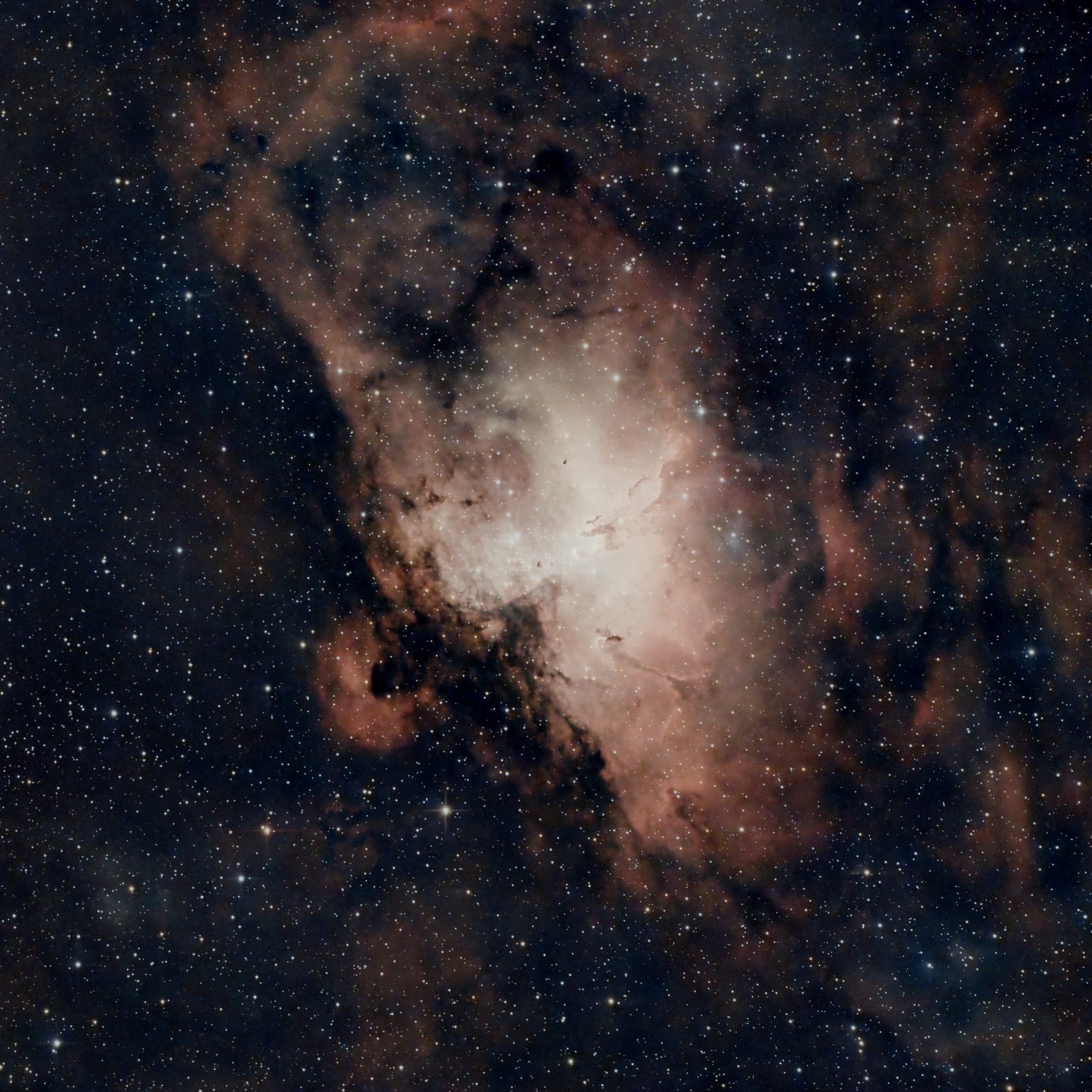

M16, THE EAGLE NEBULA on 2023-08-04
The Eagle Nebula (catalogued as Messier 16 or M16, and as NGC 6611, and is also known as the Star Queen Nebula) is a young open cluster of stars in the constellation Serpens. Both the "Eagle" and the "Star Queen" refer to visual impressions of the dark silhouette near the center of the nebula, an area made famous as the "Pillars of Creation" imaged by the Hubble Space Telescope. The nebula contains several active star-forming gas and dust regions, including within the Pillars of Creation area. The Eagle Nebula is located about 5700 light-years from Earth in the Sagittarius Arm of the Milky Way. A spire of gas can be seen coming off the nebula in the northeastern part is approximately 9.5 light-years, or about 90 trillion kilometers long. The cluster associated with the nebula has approximately 8100 stars, which are mostly concentrated in a gap in the molecular cloud to the north-west of the Pillars. The brightest star (HD 168076) has an apparent magnitude of +8.24. It is actually a binary star formed of an O3.5V star plus an O7.5V companion. This star has a mass of roughly 80 solar masses, and a luminosity of up to 1 million times that of the Sun. The cluster's age has been estimated to be 1–2 million years old.
This photo was taken in Kyle, Texas through a 6-inch f/4 Telescope, on a Sky-Watcher EQ6-R mount, with a ZWO ASI533MC PRO color camera. Plus an Optolong L Pro Light Polution Filter. The total image acquisition time is: 02 hrs 03 min 00 sec.
Full Size View Full size files are very large and can take a minute to download. After downloading the full-size picture to zoom in or out on a computer hold down the Ctrl key and use the scroll mouse button, or you can press the + or - key.